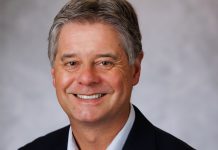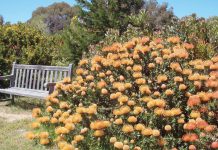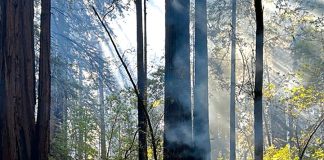Development and quarrying has already taken a severe toll on sandhills and parkland sandhills, out of what few are left, but invasive species is currently the biggest threat on the Olympia wellfield. I am opposed to the ban that was passed by the new SLVWD board last Thursday because it was passed without a feasible, science based alternative plan for ensuring the protection of these sandhills against invasive species. The few alternatives that I have heard about aren’t even based in reality.
Lost in the controversy is the 14 acres of sandhills parkland habitat that is 25% of all that remains. The San Lorenzo Valley Water District owns 25% of one of the most unique and threatened habitat types in the world. There is only 57 very threatened acres left in our county, and it doesn’t exist anywhere else outside of Santa Cruz.
It is hard to overstate how unique and wonderful the Santa Cruz mountains are. Biologically, we are a biodiversity hotspot within a hotspot. I recently received the new issue of Flora with the 2018 “Rare Plant Treasure Hunt Review” and what do I find featured? Our own sandhills, and 2 of our sandhills endangered species.
Why should we care about preserving this biodiversity? Many people, some perhaps even on this new SLVWD board, think the furry and cute species or maybe the species that we eat are the only ones we should consider saving. This is wrongheaded.
There are many arguments for preserving biodiversity, but I will mention just a few:
n Although they don’t ever gain much traction anywhere, we should all consider the moral and philosophical aspect of humanity causing the planets 6th mass extinction event. Who are we as a species and what does that say about us? What does it say about us, here in Santa Cruz, if we willfully perpetuate this global pattern of biological annihilation? If we can’t approach this issue in a more thoughtful and science-based manner, what hope is there for the rest of the world?
n There are also practical arguments. Famously Aldo Leopold’s first law of intelligent tinkering: keep all the pieces. I prefer the expression: “Don’t pop the rivets on our spaceship,” which is more literal than it is figurative.
n Our biological infrastructure is just as important as any of our other infrastructure. Now, imagine SLVWD engineers being told that they could no longer use pollution causing mechanical excavation equipment, and they would have to use shovels to dig out and replace a big water main. And then suggesting they could use volunteers to do the extra work and reduce the additional expense. This is what we are talking about doing for the next 50 years in the sandhills. Even if we could get this large and ongoing volunteer commitment, and the expensive take permits for impacting the June Beetle Larvae by pulling, there are cryptobiotic soils in the sandhills which are hugely susceptible to disturbance. A single foot print can destroy them, and they can take more than 20 years to recover.
I have my own selfish personal reasons for wanting to preserve biodiversity. Experiencing and learning about the earth’s organisms and ecosystems fills me with wonder and joy. I also mourn all that’s been lost already, and with each passing day. And I resent the generations who came before me who didn’t have the good sense or the character to intervene when they had the chance.












